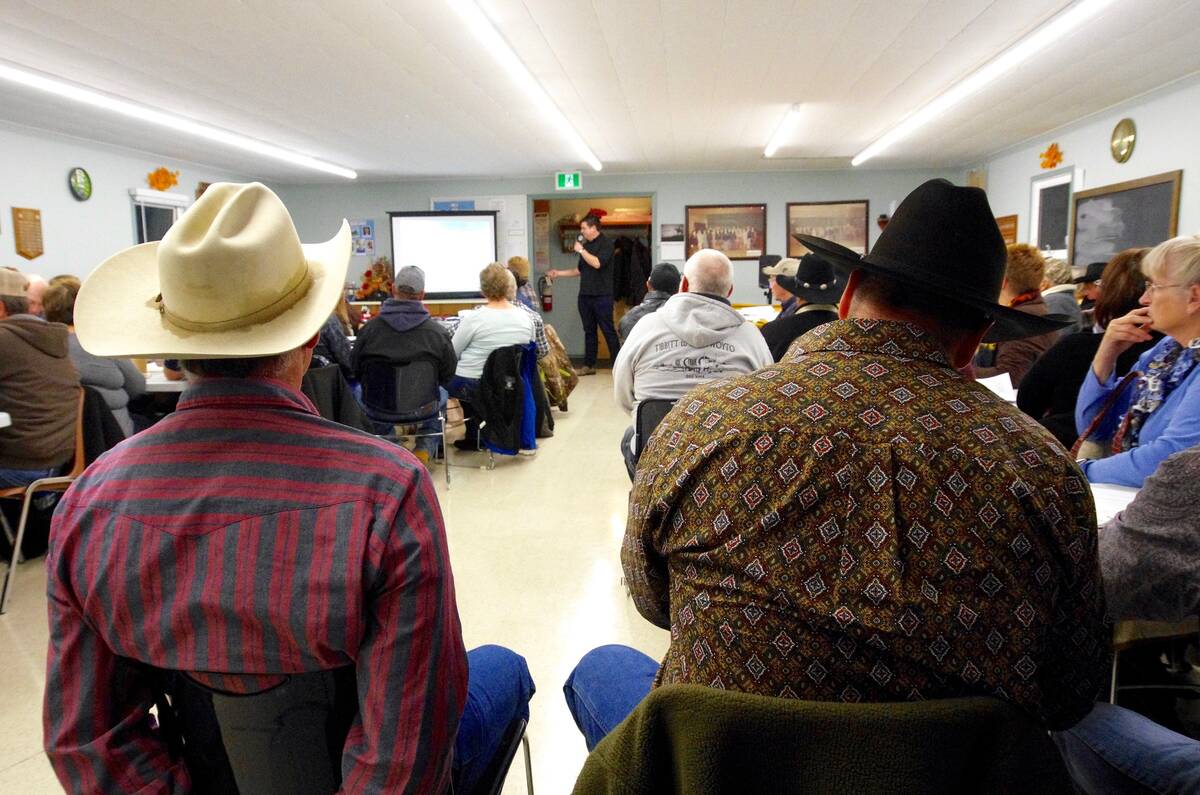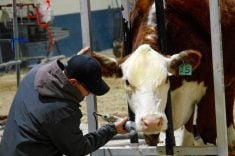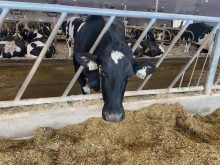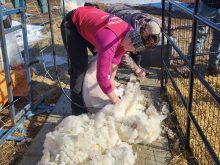’Twas two days before Good
Friday and the buyers were
anxious.
Their orders weren’t filled and
of this they were conscious.
It set the stage for some
bidding gone wild.
If into the ring enough sheep
and goats filed.
That was the setting just two days before the key holiday season for sheep and goat producers, and those producers did in fact deliver — right around 300 sheep and goats as it turns out — at the Winnipeg Livestock Auction’s April 15 sale.
Read Also

Don’t blow off that beef producer meeting
Local veterinarians and livestock experts often speak at beef producer group events. They have good advice for the farmer on vaccines, calving, beef herd management and more.
The bidding on the ewes was strong as the demand for quality truly showed. A small herd of British blackface ewes created major buyer interest as they entered the arena. There appeared to be no price differences between the wool and hair ewes. The buyers showed less interest in sheared and pregnant ewes at this sale.
The lighter rams were of demand for the buyers. The heavier rams, weight ranging from 170 to 180 pounds, brought $1.06 to $1.31 per pound. A 115-pound ram brought $2.23 per pound.
There was only one 130-pound Clun Forest-cross lamb that classified as a heavyweight lamb. This lamb brought $217.75 ($1.675 per pound).
The new-crop lambs were of quality and the buyers were waiting to pounce. There were only wool lambs at this sale.
The buyers were requiring some immediate lambs, due to a later sale, so the bidding was strong on the market lambs. The prices ranged from $2.19 to $2.25 per pound. The upper-quality lambs brought a price range from $2.48 to $2.68 per pound.
The supply of feeder lambs was limited to nine lambs. The bidding continued to remain constant, as seen with the market lambs. Price ranged from $2.50 to $2.75 per pound. An exception was a 90-pound Rideau-cross lamb which brought $1.725 per pound.
The lightweight lambs continued this trend on the bidding. There appeared to be no price differences between the wool and hair lambs. The 70-plus-pound lambs brought a price range from $2.57 to $2.875 per pound.
A 60-plus-pound lamb brought similar price range from $2.20 to $2.70 per pound.
The 50-plus-pound lambs showed no dropping of interest by the buyers. Bidding ranged from $2.625 to $2.76 per pound.
A group of six 40-pound Katahdin-cross lambs brought $2.625 per pound.
The supply of goats was larger than in the past sales. The demand for goat does always remains fairly constant. Nubian-cross goat does represented the dairy class, bringing the same prices as the meat does for animals of the same weight.
The producer of the 195-pound Boer-cross buck must have had exhibition experience. This muscular structured buck appeared to be prepared for a fair, being washed, combed and very impressive. As this buck strutted around the arena, his pure-white long hair flowed ever so gracefully.
The demand for goat kids always remains strong and it appears there are never enough goat kids below 90 pounds to satisfy the various buyers. The bidding remained strong, very similar to the past few sales. It is important to maintain good health and quality animals to obtain these higher prices.
The Ontario Stockyard Report showed that the bidding has dropped quite quickly, thus causing reduction of sheep and goats delivered. Even with less sheep and goats arriving, the price bidding has not increased to the amount expected for this reversible event, even though the Easter effect has been passed.
















